10 strange moons in our solar system
Natural satellites of planets are mystic and amazing celestial bodies. They revolve around the plants and can differ in numbers. A planet can have no moon like Mercury and Venus in our solar system while others can have a large number of them like Jupiter which possess 79 of them. While some moons are amazing others can be mysterious and strange too.
What is the weirdest moon in our solar system? Following are 10 strange moons in our solar system.
#10. Phobos
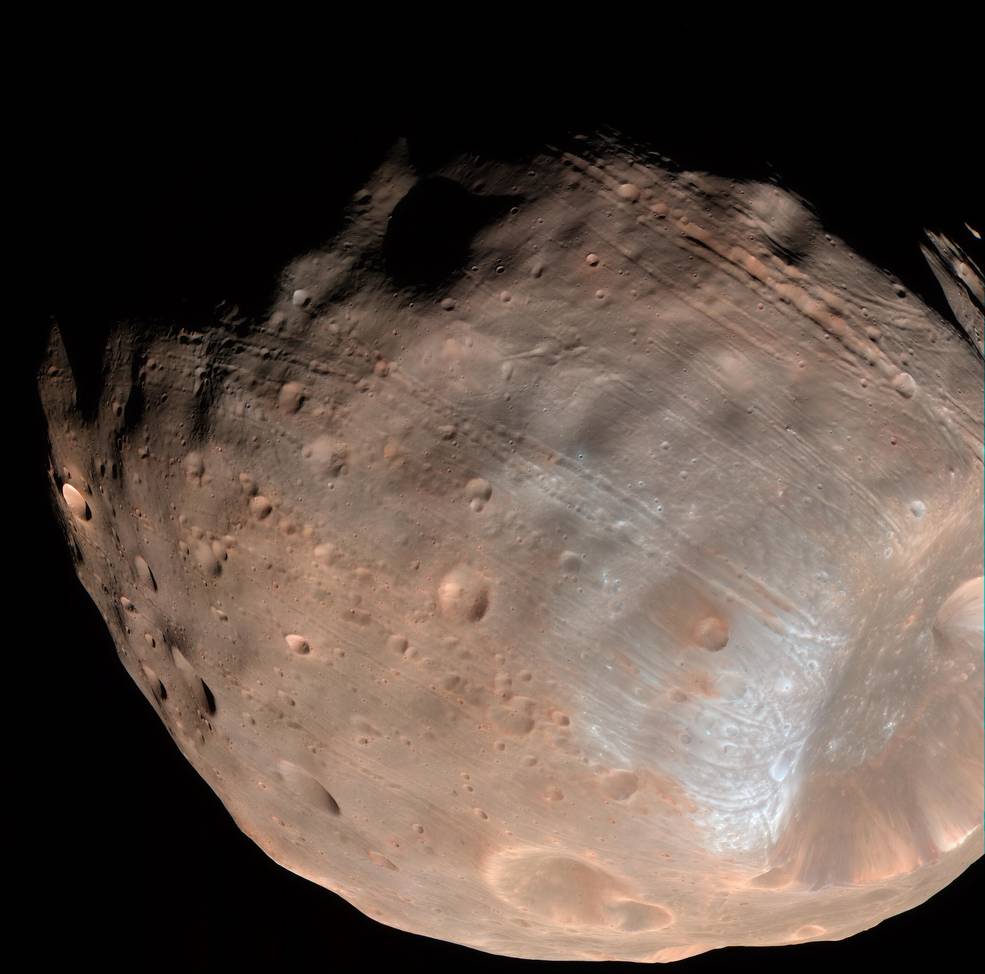
Phobos is an irregular moon orbiting Mars with a non-spherical shape.The moon’s orbit is as strange as its name.The moon is named after Ares’s son. It revolves so close that it completes three orbits in one day. Phobos might look like an uninteresting object in space but what makes it interesting is its catastrophic destiny to crash into its planet.The moon is getting closer to the planet at a rate of 1.8 metres every hundred years.
#9. Callisto
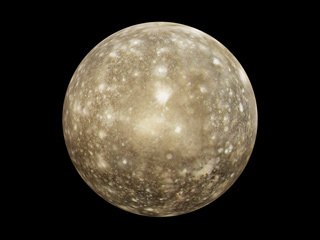
It is the second largest moon of Jupiter and the third largest in the solar system with a diameter of 4821 km. It was discovered by Galileo Galilei in 1610. It orbits Jupiter in 16.7 days. Based on its diameter it should be a planet but it is bound to be a satellite of Jupiter. This is one of the places where you can watch the oldest landscape in the solar system, it is as old as 4 billion years. The reason behind this is the inability of the moon to perform geologic activities and replenish its surface.
#8. Nereid
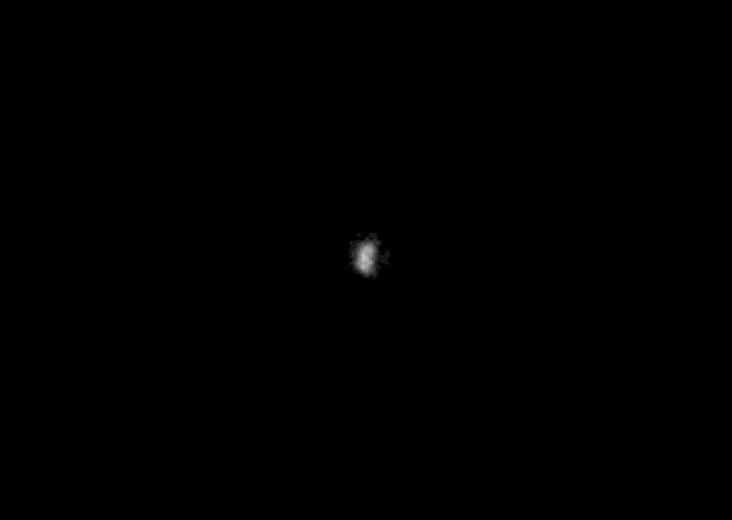
This moon is under Neptune’s possession. It takes 360 Earth days to orbit its planet. It can be as close as 841,100 km and as far away as 5,980,200 km. It is mysterious in a way of its own. Its orbit has led astronomers to believe that it was captured from the Kuiper Belt.
#7. Titan
Titan is the second largest moon in the solar system. It has a thick atmosphere, dense enough that the solid core is obscured by nitrogen and methane clouds. UV radiation from the sun initiates reactions to occur between gases to produce organic molecules. The Cassini probe revealed lakes and rivers made up of ethane and methane. These rivers turned out to be produced as rain from orange clouds.
#6. Iapetus
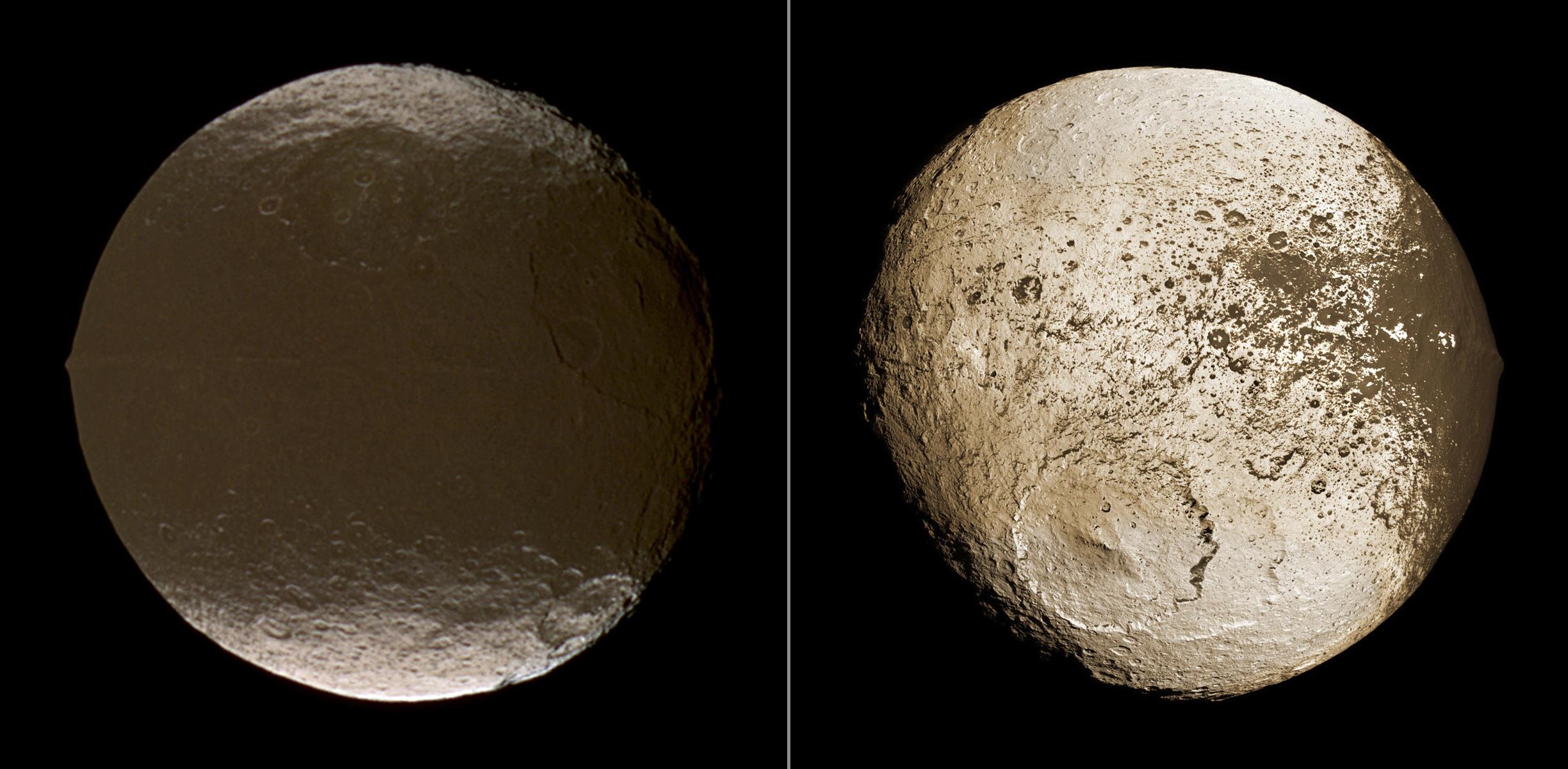
Turns out this moon is tidally locked to start despite its distance from its planet. This satellite was a sneaky one and was very difficult to find. Due to its tidally locked position it mysteriously became brighter and fainter as it completed its orbit of Saturn. Cassini observed this difference and predicted two faces of the moon.
#5. Mimas
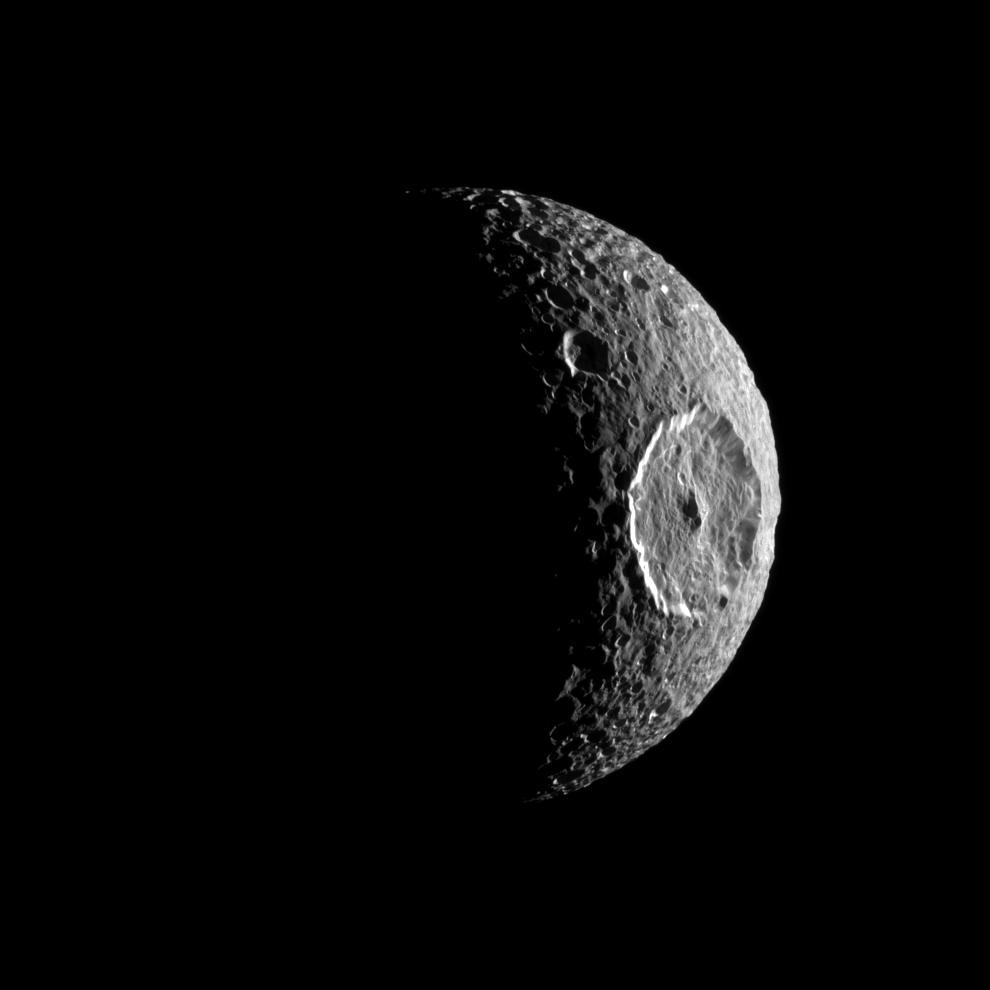
The first look of this moon might scare some of you, because its shape resembles that of a fictional space station. The reason behind this shape is its massive impact crater. The crater measures 130 km with a depth of 5 km. This crater is named after its founder William Herschel who founded it in 1789. The body that made the crater almost ripped it apart but somehow the moon survived that catastrophic event.
#4. Enceladus
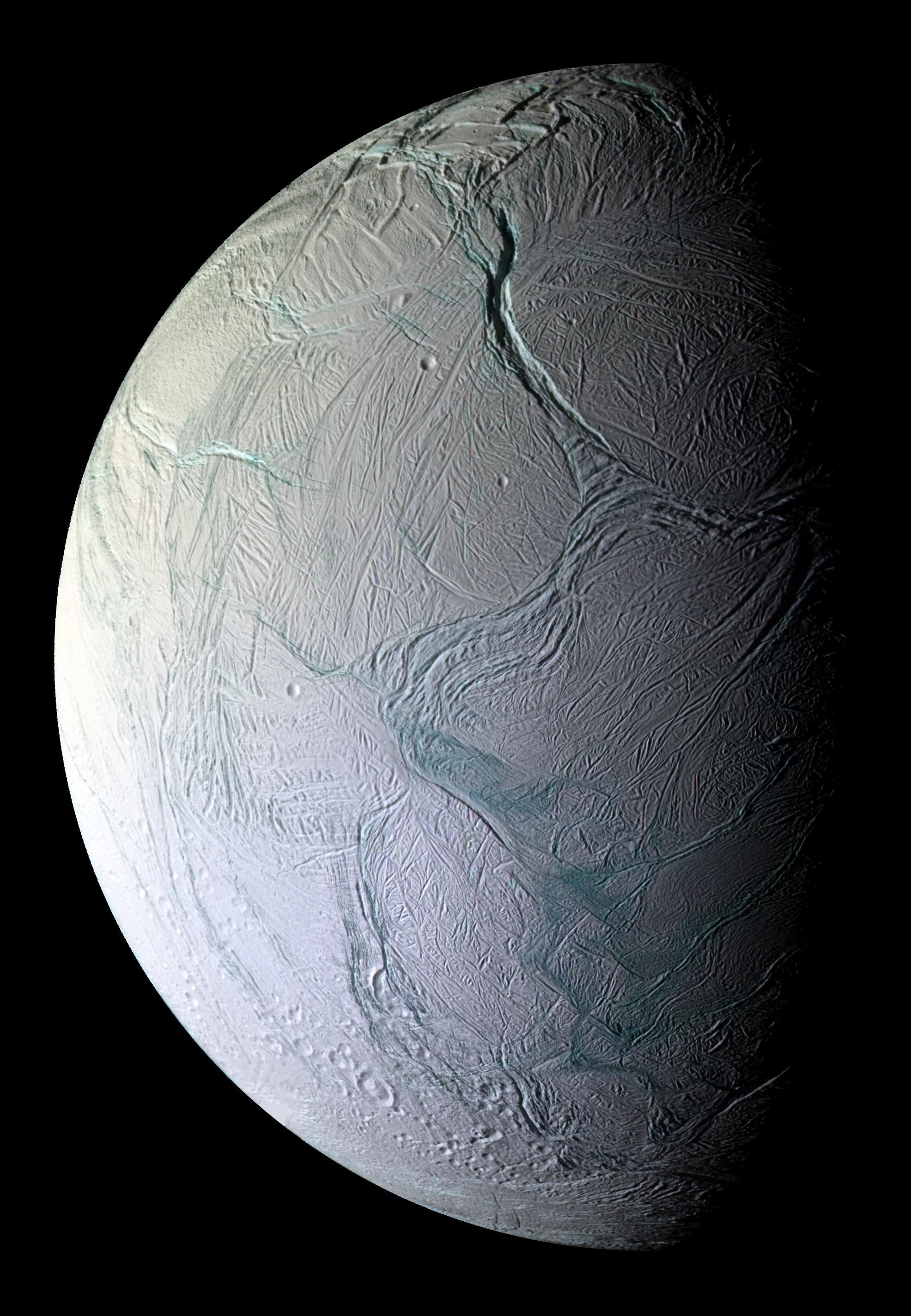
It is one of the brightest objects in our solar system, this is due to the fact that its water ice structure reflects almost 100 percent of the Sun’s light but this isn’t the only amazing thing about it. It is often described as most scientifically compelling place in our solar system as it has one of the most promising conditions for harboring life outside of our planet. In 2005 the Cassini discovered something amazing about this moon.
There are geysers on the moon. The fumes from geysers include ice particles as well as water vapours, carbon dioxide, methane, ammonia and nitrogen. The moon is hiding a secret beneath its icy surface – a global sized ocean of water, as evidenced by the wobble in its orbit which can only be caused by an interior liquid.
#3. Atlas

Saturn’s other inner moon, Atlas has an equatorial ridge giving the moon its distinctive flying saucer shape. The moon has an average radius of 15 km. It was discovered in 1980 by using images from Voyager 1 during its flight by Saturn. It completes one orbit in 14.4 hours.
#2. Charon
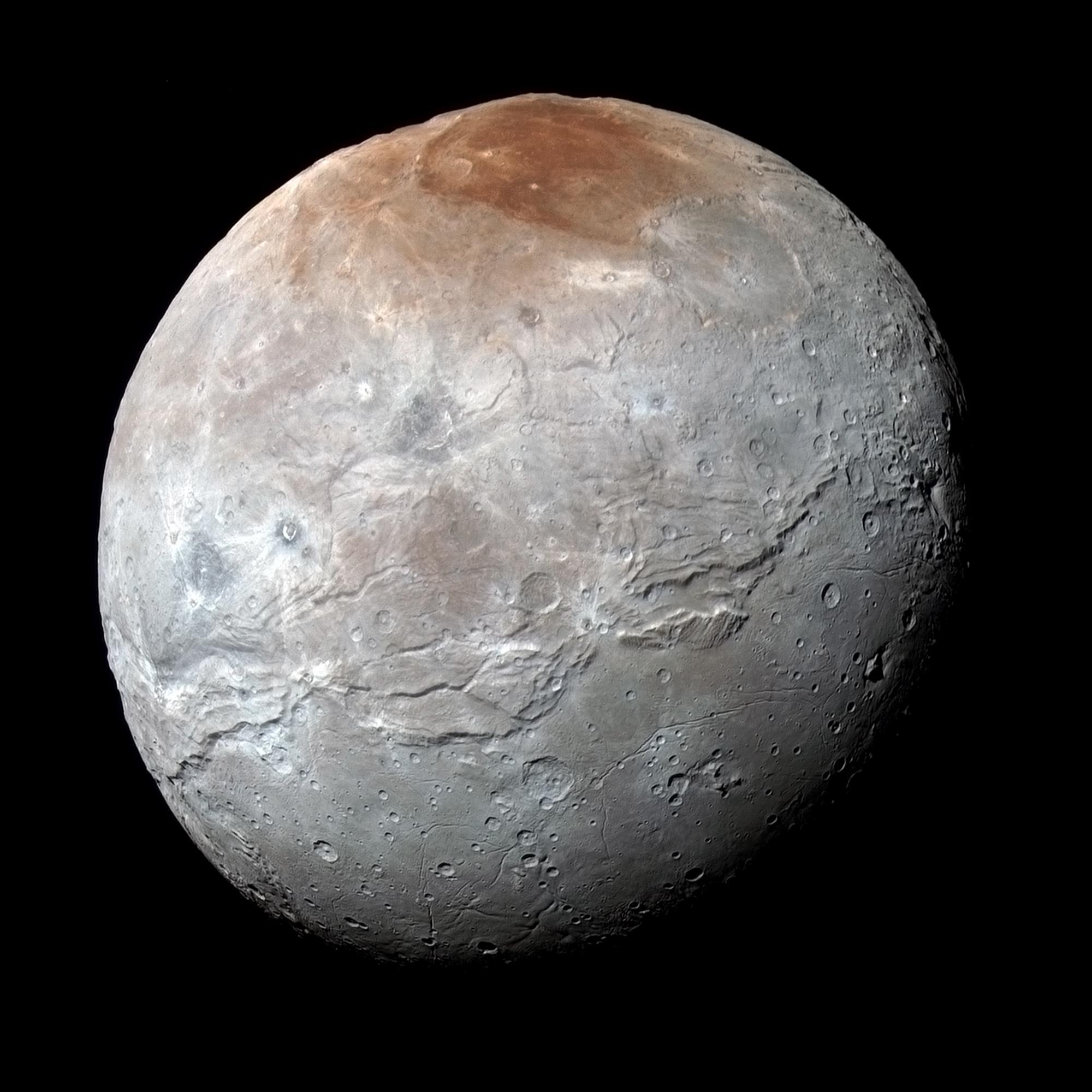
It is the largest and innermost moon of Pluto. It was discovered in 1978. If it was not orbiting Pluto it would be a dwarf planet on its own. It’s so big that Pluto and Charon are sometimes referred to as double dwarf planet systems.
#1. Dactyl
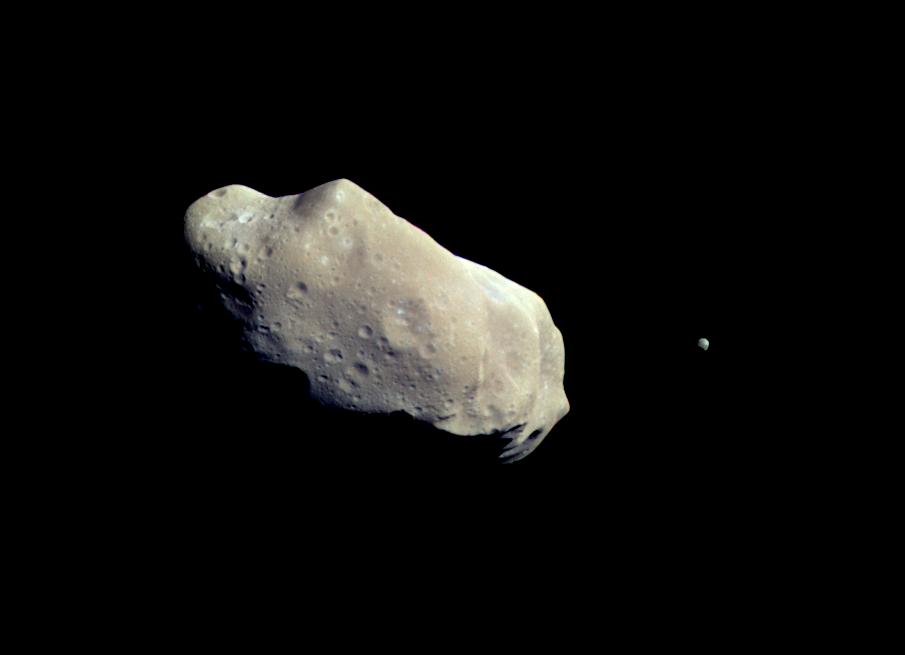
It was discovered in 1995 by a Galileo probe. This moon is less than a mile in diameter and is a natural satellite to the asteroid Ida, a Koronis asteroid located in the belt between Mars and Jupiter. Before this discovery scientists had no evidence that asteroids can have moons, but since its discovery a further 24 have been found to orbit asteroids.
